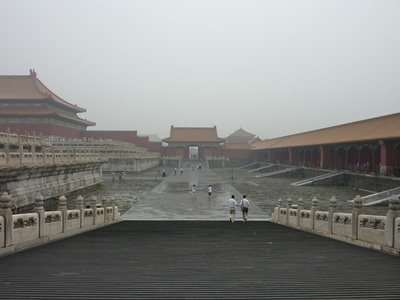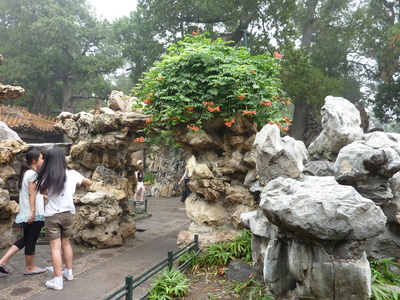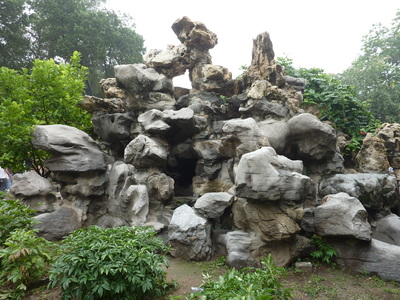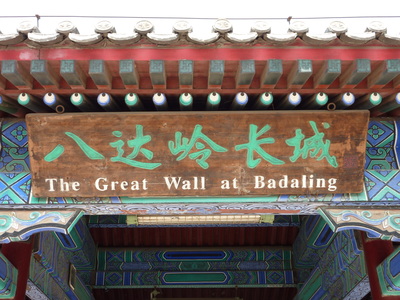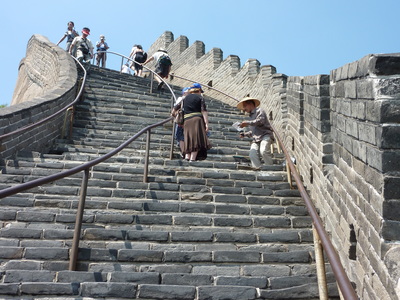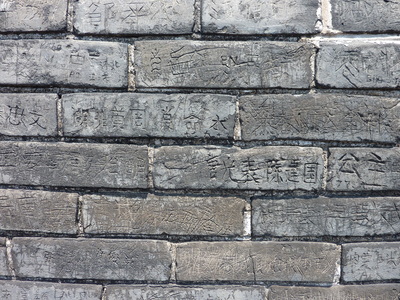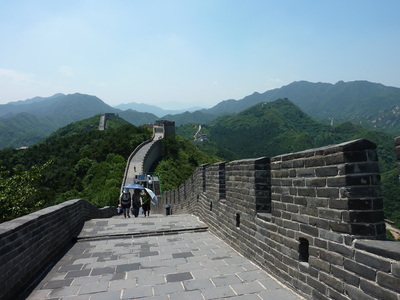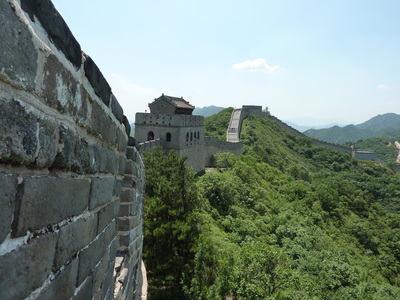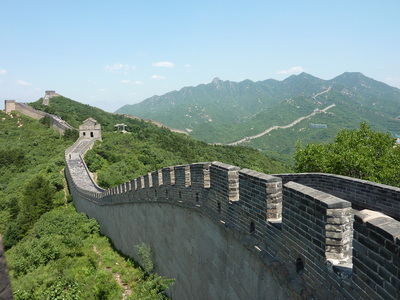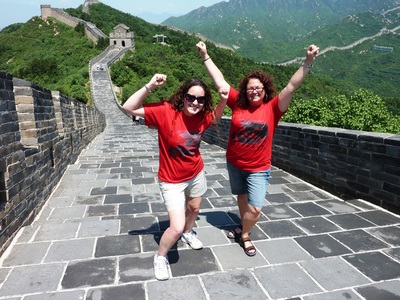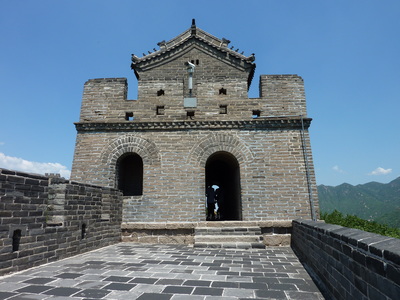China Pictures -- Beijing

Beijing is the capital city of China. It is home to the Forbidden City, Bird's Nest Stadium, Summer Palace, the Temple of Heaven, the best-preserved portion of the 4,000 mile Great Wall, as well as many other fascinating places. Scroll down to see a variety of slide shows from my adventures in Beijing. (The lady in the picture to the left is dressed in a traditional Manchu costume. The Manchus called themselves the Qing and were the last dynasty to rule China.) Back to China Websites
Tiananmen Square and the Forbidden City
Tiananmen Square is a huge plaza built in 1417 by the Ming dynasty in front of the Forbidden City. It covers 100 acres, is the largest urban square in the world, and can hold over one million people. The square is bordered by China's Congress building, the tomb of Mao Zedong, the monument to the people's heroes, as well as the Forbidden City.
The Forbidden City was built by the Ming dynasty and was used as the emperors' residence for about 500 years until the Qing dynasty was overthrown in 1911. Originally, the palace had 9,999 rooms, but over time some of them have been put together to make larger rooms.
Things to look for:
--large water vats (kept all over the palace in case of fire) that the Japanese scraped the gold off of
--little statues on the corners of the roof that protect houses from evil spirits and bad luck
--the number of posts sticking out of the top of the doorway that show the social class of those living there
The Forbidden City was built by the Ming dynasty and was used as the emperors' residence for about 500 years until the Qing dynasty was overthrown in 1911. Originally, the palace had 9,999 rooms, but over time some of them have been put together to make larger rooms.
Things to look for:
--large water vats (kept all over the palace in case of fire) that the Japanese scraped the gold off of
--little statues on the corners of the roof that protect houses from evil spirits and bad luck
--the number of posts sticking out of the top of the doorway that show the social class of those living there
The Great Wall of China
We drove about an hour outside of Beijing to reach the Badaling portion of the Great Wall, which was built during the Ming Dynasty. Our tour guides told us that the less crowded route would be a steeper climb, but we opted for it nonetheless and are soooooo glad we did. We actually hiked to the end of the Great Wall, believe it or not (or at least as far as they let you go). We bought cute T-shirts that say, “I climbed the Great Wall of China” when we got to the end for a whopping $3 and then turned around and headed back. It was as awesome of an experience as we had hoped it would be! It truly was amazing how long and serpentine the Wall was as it snaked over the mountains.
Hutongs & Bell/Drum Towers
When the Mongols took over China they brought their horses with them. The horses needed a lot of water so wells were dug all over Beijing. The Chinese thought the Mongols called the wells "hutongs" so they named the neighborhoods that developed in between the wells "hutongs." These historic neighborhoods are built in the traditional Chinese style with a courtyard and gray tile roofs. We took a rickshaw ride through the hutongs, had lunch with a local family, and participated in a fan dance with some local women. Such a fun experience!
During ancient and medieval times, most Chinese cities had bell and drum towers. The bells were rung in the morning to wake everyone up and to announce that it was time to open the city gates. In the evening, soldiers beat the drums to let the people know that the gates would be closing.
During ancient and medieval times, most Chinese cities had bell and drum towers. The bells were rung in the morning to wake everyone up and to announce that it was time to open the city gates. In the evening, soldiers beat the drums to let the people know that the gates would be closing.
Summer Palace & the Temple of Heaven
The Summer Palace was used by the Chinese emperors when they needed to get away from the Forbidden City for a little vacation. It covers about 1.5 square miles and has all kinds of gardens, temples, as well as the royal palace. There is a beautiful long corridor that stretches 728 meters and has 14,000 paintings depicting daily life throughout China during the 1700s. We got to take a dragon boat ride across Kunming Lake and couldn't believe how loud the cicadas were when we got off the boat on the other side.
The Temple of Heaven was where the emperor would go to offer sacrifices to heaven twice a year. The first time was to ask for a good harvest, and the second was to give thanks for the harvest.
The Temple of Heaven was where the emperor would go to offer sacrifices to heaven twice a year. The first time was to ask for a good harvest, and the second was to give thanks for the harvest.
Beijing City Pictures
Our tour guides told us that if you want to see China's past, go to Xi'an. If you want to see China's present, go to Beijing. If you want to see China's future, go to Shanghai. The Chinese government worked very hard to get Beijing in ship shape for the 2008 Olympics and we were super thankful for those efforts. The architecture was impressive, especially the Bird's Nest stadium. One thing that stuck out to me was that every apartment had an air conditioning unit attached to its outside wall.
Things to look for:
--little tiny Bird's Nest light
--five buildings that are designed to look like a dragon
Things to look for:
--little tiny Bird's Nest light
--five buildings that are designed to look like a dragon












